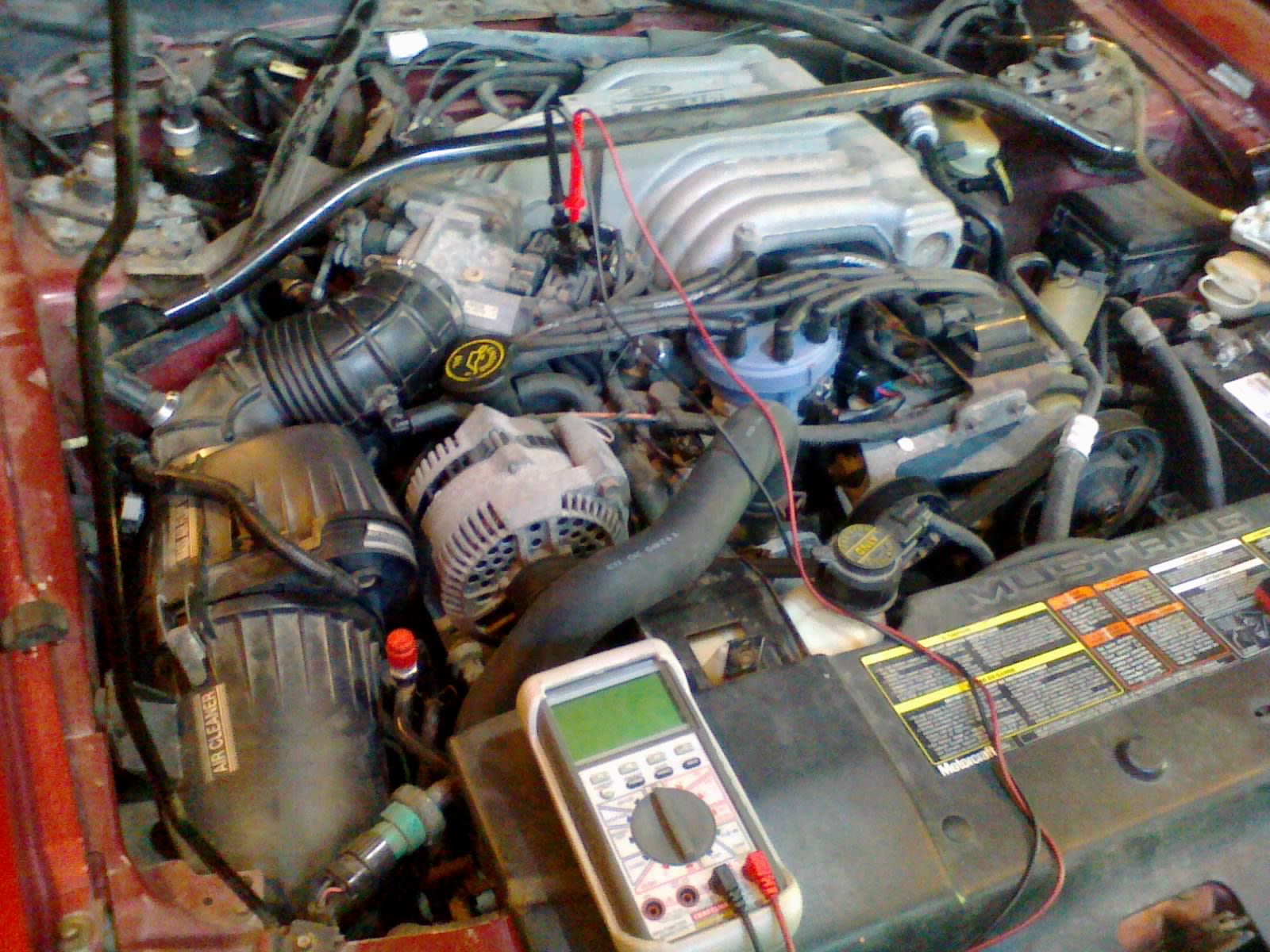
One one hand, an engine just needs sufficient air, fuel, and spark to run. But on the other hand, a modern car has so many engine management bits doing so many things at once, it’s easy to get lost trying to diagnose a problem. That’s where this book comes in handy...
Of course, I’m not gonna read the whole thing. Despite this book being specific to 1995 model year Fords, it still covers a variety of engines, well beyond just the ones that were available on Mustangs two decades ago. So there’s some navigating to do.
The journey begins in section 2A: Diagnostic Routines, where I had to choose my own adventure by selecting a specific symptom.

My Mustang was trying to stall out when I’d lift off the accelerator (as one does when approaching a stop sign), but there were multiple diagnostic charts that seemed to fit that condition. Should I follow the one about stalling at idle, or stalling on deceleration?
It had been a while since I drove it, waiting to get my hands on a book like this. In the meantime, I had noticed a little corrosion starting on the positive terminal. So I removed the battery, neutralized the corrosion and cleaned it all back up before reinstalling. Of course, this erased all of the codes that I had stored.
So I went for a drive. This would get the engine up to temperature, and bring back any codes (if there was still anything going on to trigger them). But the car drove without any problems. Even the stalling had gone away.
But I didn’t fix anything! The battery terminals were still tight when I went to remove them, and the corrosion was nowhere near advanced enough to start causing issues yet. So the next day, I took it for another drive, and the stalling returned. I limped it back home, and pulled codes- nothing. No stored codes, except for a 1-1-1 “pass” code.
But it was idling roughly. So I chose a different flowchart- chart #6, the “runs rough - @ idle” one.
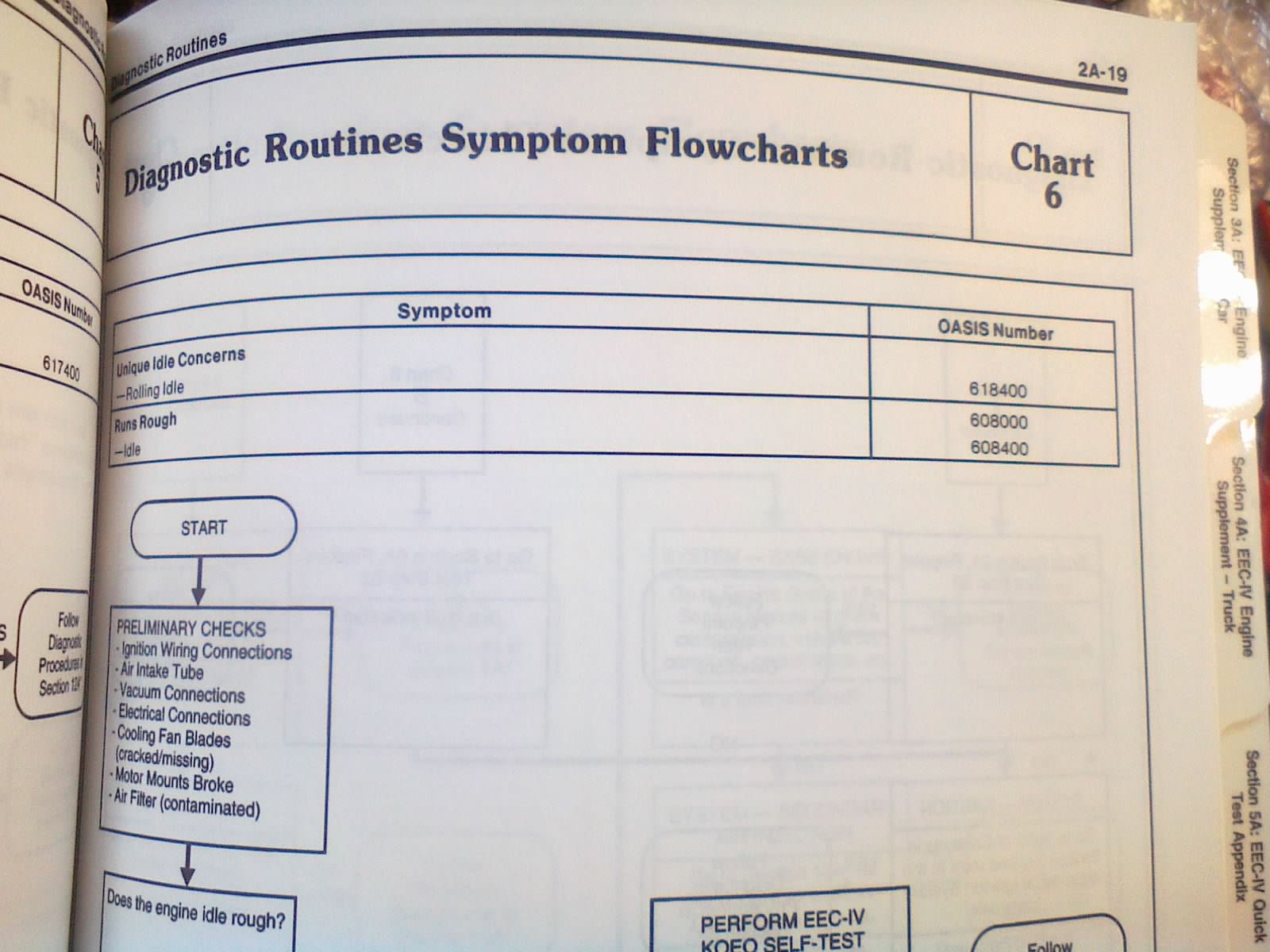
I dutifully went through my preliminary checks, suspecting that most (if not all) of them would be a waste of time. Sure enough, no easy fixes yet.
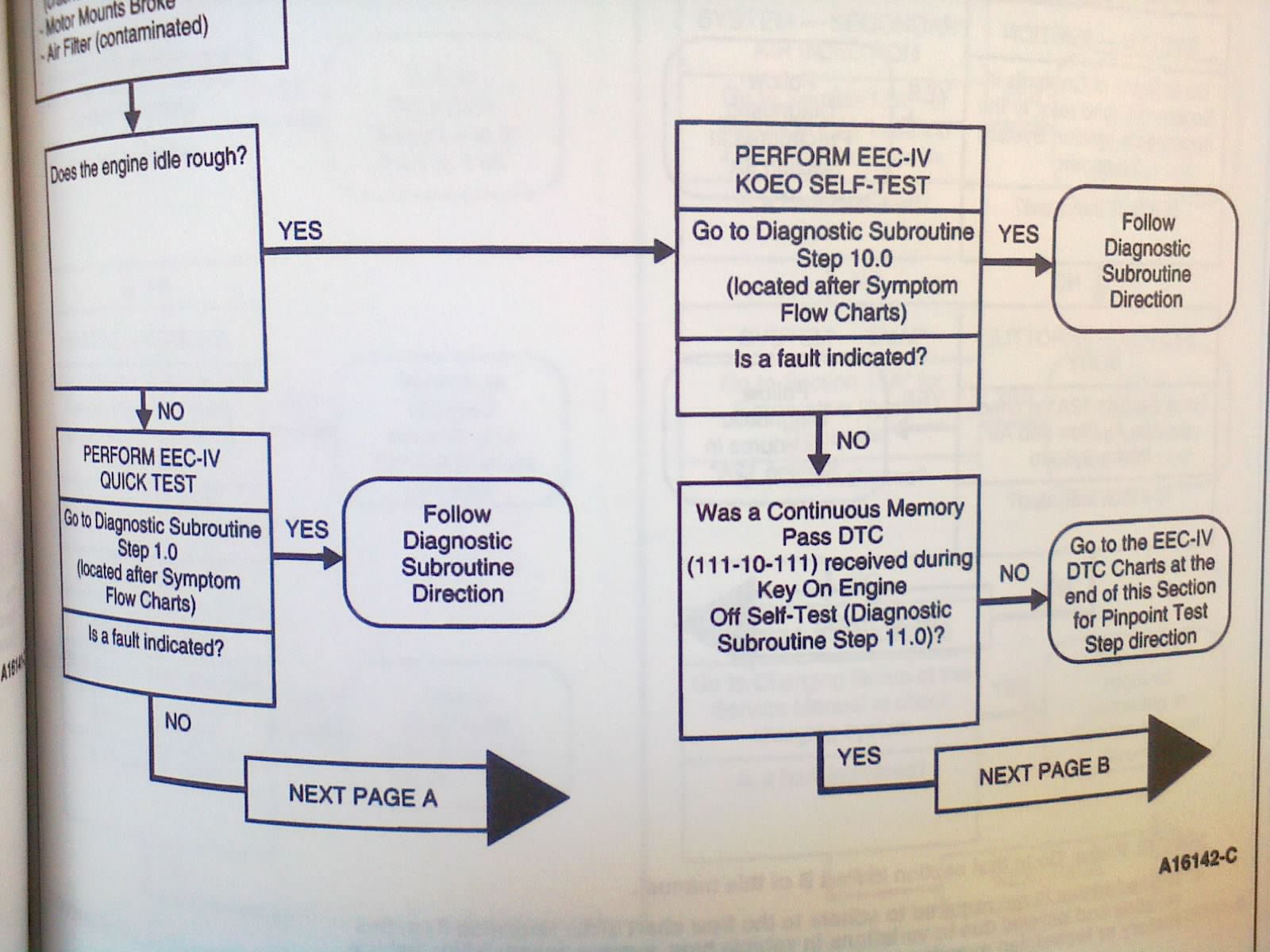
“Does the engine idle rough?” You bet it does! “Any codes?” Nope, nothing to see here. Next!
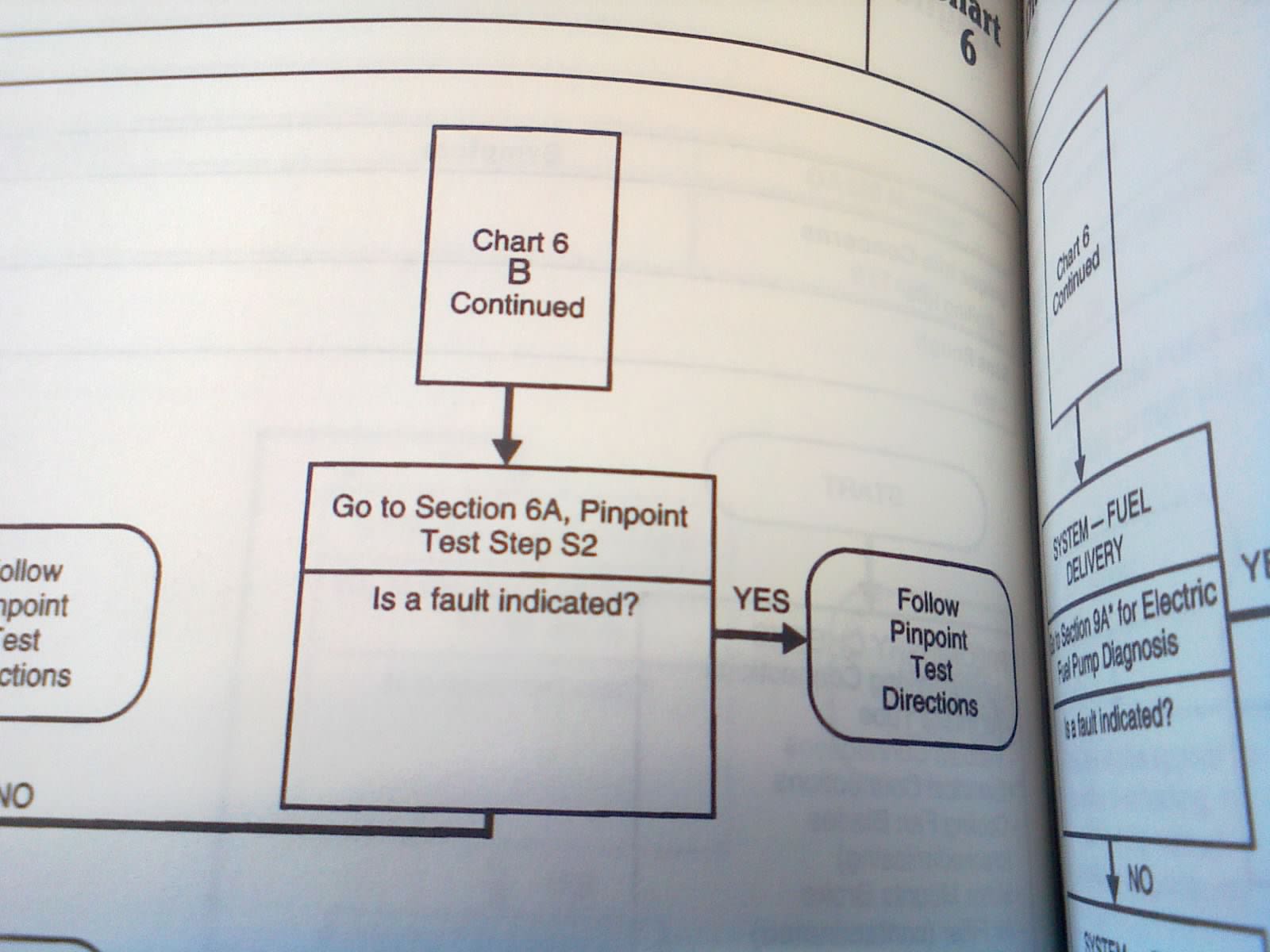
Onward to section 6A, a massive stack of pages dedicated to EEC-IV pinpoint tests. Subsection “S” was found on the 437th page of section 6A.

Unplugging the IAC had no effect, so it was time to turn to subsection KE.

Ah- a resistance check! Sweet, let’s see what we got here.
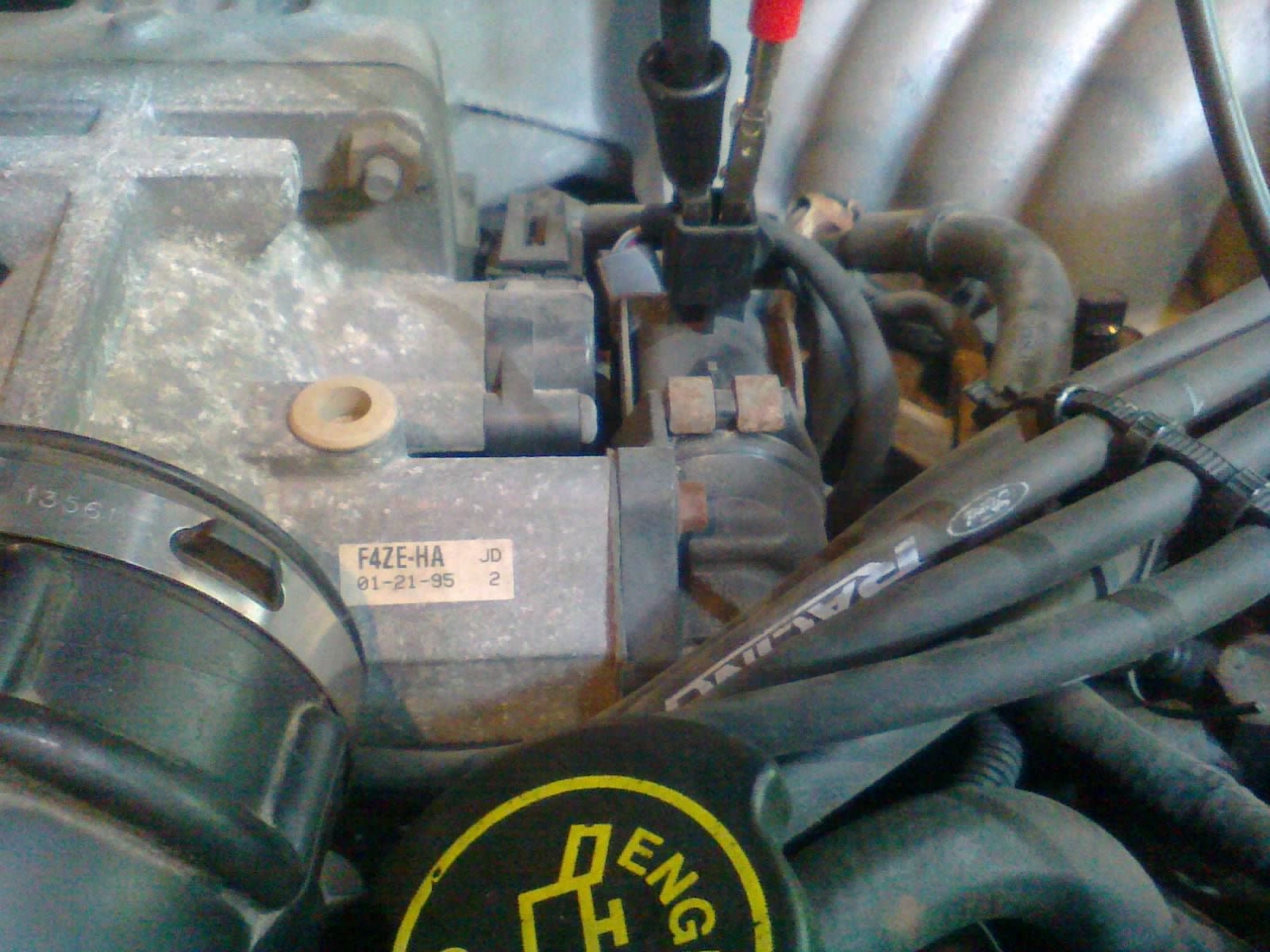
Hooked up my multimeter, but no matter how much I wiggled the connections, it would not settle on a number. It seemed to bounce mostly around the neighborhood of 170kΩ. Well, there it is. Bad IAC, simple as that.
The IAC was actually my first guess when the problem came up a few weeks ago. As I struggled to keep the engine running on my way home that day, I stopped by the parts store for an IAC gasket. I’d gotten good results out of cleaning it a few years ago, but cleaning it this time around would have been a waste of time. I guess I was fortunate that the parts store didn’t have the gasket.
Not only that, but it gave me a minute to pause and remember to check for codes first. That put me into a stubborn no guesses, diagnose it PROPERLY sort of mood. And here I am with a big fat book that pointed me to the problem within minutes. And it has more extra information than I can shake a stick at!

So anyway, I ordered up a new IAC, and wouldn’t ya know the old one came off cleanly without disturbing its gasket. Go figure. Well, I guess I’ll save the new gasket just in case I ever need it and don’t want to wait for a parts store to get one in.
But before installing the new one, why not test the solenoid resistance?

Sweet. A nice steady reading, too. Perfect!
Got it installed, put everything else back together, and went for a drive. I’ve already taken it through a couple of drive cycles, and so far so good! That must have been it. (And none of those previous codes have come back yet, either.)
Feels so good to not have wasted money on what I was starting to think (before I got this book) was going to be a bad PCM. Feels even better to be driving it again! Now I can park the truck and take care of some things on that one that I’ve been putting off. A couple of new switches (already diagnosed as bad), and I’m thinking motor mounts, too...